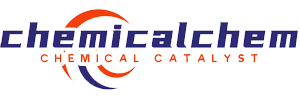Plastic additives are added to plastics The purpose of additives is mainly to improve processing performance, increase efficiency and reduce costs. Additives account for a small proportion of plastic materials, but they have a great impact on the quality of plastic products. Different types of plastics vary depending on the molding and processing methods. As well as different usage conditions, the types and dosages of required additives are also different. The main additives are as follows:
1. Plasticizer
Plasticizers can increase the softness, extensibility and plasticity of plastics , reduce the flow temperature and hardness of plastics, which is beneficial to the molding of plastic products. Commonly used ones include phthalates, sebacates, chlorinated paraffin and camphor. Our most common one is camphor.

2. Stabilizer
We all know that during the processing, storage and use of plastic products, under the action of light, heat and oxygen, aging phenomena such as fading, embrittlement and cracking will occur. In order to delay and prevent the occurrence of aging phenomena, stabilizers must be added Those mainly used to prevent thermal aging are called heat stabilizers; those mainly used to prevent oxidative aging are called antioxidants; those mainly used to prevent photoaging are called light stabilizers. They are collectively called stabilizers. Plastics with the best performance today The stabilizer is methyl tin heat stabilizer (abbreviated as 181), which is very effective in the calendering, extrusion, injection molding and blow molding of rigid polyethylene (PVC). Because of its high safety, it is especially used. It is used in food packaging and high-definition rigid polyethylene products. At the same time, it is also widely used in plastic doors and windows, water pipes, and decorative materials to replace other highly toxic plastic heat stabilizers. It is used in the United States, Europe, and Japan. It has been widely used in recent years. 181 methyl tin heat stabilizer has begun to be widely used in China p>
3. Flame retardant
Additives that can improve the flame resistance of plastics are called flame retardants. Most plastics with flame retardants have self-extinguishing properties or slow burning rates. Commonly used flame retardants include antimony oxide, aluminum and boron compounds, halides and phosphates, tetrachlorophthalic anhydride, and tetrachlorophthalic anhydride. Wait

4. Antistatic agent
Antistatic agent plays a role in eliminating or Most antistatic agents are electrolytes that reduce static electricity on the surface of plastic products. Their compatibility with synthetic resins is limited, so they can migrate to the plastic surface to absorb moisture and eliminate static electricity
5. Foaming agent
Plastic foaming agent is a kind of plastic foaming agent that can vaporize at a certain temperature Low-molecular organic compounds, such as dichlorodifluoromethane; or organic compounds that decompose into gases when heated. These gases remain in the plastic matrix to form foam plastics with many fine foam structures. Commonly used azo compounds and nitroso compounds Wait
6. Colorants
Colorants are used for coloring plastics mainly for beautification and modification. About80% of plastic products are colored to make final products

7. Lubricant
Lubricants are used to improve the mold release and releasability of plastics during heating and molding. Commonly used lubricants that are added to improve the surface finish of products include: stearic acid and its salts, paraffin wax, synthetic wax, etc.
8. Reinforcement materials and fillers
In many plastics, reinforcing materials and fillers account for a considerable proportion, especially reinforced plastics and calcium plastics The main purpose of the material is: in order to improve the strength and rigidity of plastic products, various fiber materials or inorganic substances are generally added. The most commonly used reinforcing materials are: glass fiber, asbestos, quartz, carbon black, silicate, calcium carbonate, metal oxide etc

 微信扫一扫打赏
微信扫一扫打赏

